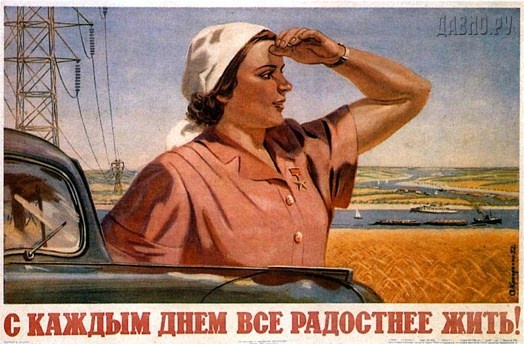What City Observatory did this week
1. Nattering nabobs of NIMBYism at the New York Times. Columnist Tim Egan called plans for a limited upzoning to enable more people to live in Seattle an unholy conspiracy of developers and socialists. In a guest commentary, City Observatory friend Ethan Seltzer responds, pointing out that all of the quaint historic neighborhoods that Egan wants to preserve are themselves the product of greedy developers (though perhaps long-forgotten ones).
2. Where socialism is triumphant in the US: Parking. While they may have failed to establish health care or housing as a human right, the American socialist community can celebrate one great victory: the right of every citizen to abundant parking (a right assured to those who don’t own cars, as well as those who do). A new study shows that in a typical metropolitan area–Seattle–there are more than 6 parking spaces for every household. While that city may face a shortage of housing for people, there is no such shortage of housing for cars.
Must read
1. Why traditional gridded streets are better. CNU’s Robert Steutville has a column exploring the advantages of the traditional street grid system, through the lens of his home town, Ithaca, New York. Like most US cities built before World War II, the city has a legacy of gridded streets intersecting at right angles. He shows that, despite substantial population growth, the gridded system has dispersed traffic in a way that minimizes congestion. It turns out that the street grid is better both for pedestrians and cars. All this is further proof of arguments advanced some twenty years ago by highway engineer Walter Kulash, who showed that much of our urban transportation problem can be traced to the dendritic, hierarchical structure of poorly connected streets that we’ve built since 1950.
2. Bending (the numbers) like Beckham: More phony economic impact analyses to support stadium subsidies. David Beckham and his partners are trying to build a stadium for South Florida’s new MLS soccer franchise, and as you would expect, is asking for substantial subsidies from the city of Miami. City officials have claimed that the ballpark will generate an additional $44 million in new tax revenues annually. But the Miami New Times takes a critical look at these numbers and finds them wanting. Most of the money would purportedly come from additional retail sales, but its dubious that any of the sales tax revenue from ancillary developments near the stadium such as retail or restaurants represent “new” tax revenue for Miami-Dade County–these sales taxes more than likely are from spending that would occur in the jurisdiction whether the new stadium were built or not. There might be good reasons to spend public money on the stadium (civic pride, soccer fandom), but expecting a big economic return isn’t one of them.
3. Aldermanic prerogative perpetuates Chicago segregation. Chicago is divided into 48 wards, with each ward represented by a single Alderman. Legally and by tradition, each Alderman has effective veto power over all of the land use decisions in her or his ward; in particular, neither upzonings nor affordable housing projects move forward without the express approval of the local Alderman. The practical result of this system has been to perpetuate and accentuate racial and economic segregation in Chicago, according to a new report by Sargent Shriver Center National Center on Poverty Law, entitled “A City Fragmented.” It’s a classic instance of how NIMBYism is baked into the structure of local government, and is a cautionary tale for those who would assert that localism-new or old-can grapple with problems of inequality and segregation.
Must Listen
Long-form public radio discussion of gentrification. NPR’s public affairs program “On Point” has a good discussion of neighborhood change, cautiously asking “Can Gentrification be a Good Thing?” Host Linda Wertheimer seems initially skeptical that the answer might be “yes,” but hears a strong case from Economist writer Idrees Kahloon arguing that gentrification has big benefits. His article in The Economist “In Praise of Gentrification” is also worth a read. Kahloon echoes City Observatory research on the relative rarity of gentrification, noting most poor neighborhoods remain poor for decades, and shifts attention to the problems of concentrated poverty, which gentrification helps to break down. Columbia’s Lance Freeman and the University of Pennsylvania’s Susan Wachter also weigh in on the question. By the end of the nearly hour long program, the panel seems to have offered a consensus that gentrification can indeed be a good thing, provided public policies and community organizations aim to leverage change to maintain neighborhood economic diversity and promote social interaction.
New Knowledge
Does the growth of tech jobs raise wages for non-tech workers? There’s little question that knowledge-based economic activity is increasingly concentrated in cities. A big question is whether the growth of high-paid high tech jobs in these places benefits lower skilled workers in non-tech industries. A new research paper from Thomas Kemeny and Taner Osman considers this question, looking specifically at differences in wage levels for less skilled workers. He finds that the presence of more tech jobs exerts a positive, but very modest upward effect on wages of workers in other industries, even after adjusting for cost of living differences; a 10 percent increase in high tech employment is associated with about a 0.1 percent increase in real wages in the local or non-traded sector fo the economy.
Thomas Kemeny & Tanner Osman, “The wider impacts of high-technology employment: Evidence from U.S. cities,” Research Policy, https://doi.org/10.1016/j.respol.2018.06.005
In the News
PlanPhilly cited our analysis showing that renters are likely to move whether or not their neighborhoods gentrify in their story on retail development near Drexel University.
Willamette Week quoted City Observatory director Joe Cortright in its coverage of the proposed congestion pricing system for Portland freeways.


